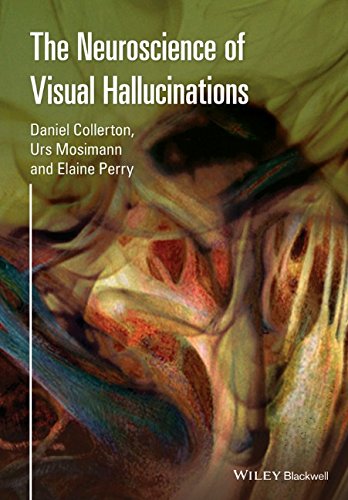

Most ebook files are in PDF format, so you can easily read them using various software such as Foxit Reader or directly on the Google Chrome browser.
Some ebook files are released by publishers in other formats such as .awz, .mobi, .epub, .fb2, etc. You may need to install specific software to read these formats on mobile/PC, such as Calibre.
Please read the tutorial at this link: https://ebookbell.com/faq
We offer FREE conversion to the popular formats you request; however, this may take some time. Therefore, right after payment, please email us, and we will try to provide the service as quickly as possible.
For some exceptional file formats or broken links (if any), please refrain from opening any disputes. Instead, email us first, and we will try to assist within a maximum of 6 hours.
EbookBell Team

4.4
82 reviewsEach year, some two million people in the United Kingdom experience visual hallucinations. Infrequent, fleeting visual hallucinations, often around sleep, are a usual feature of life. In contrast, consistent, frequent, persistent hallucinations during waking are strongly associated with clinical disorders; in particular delirium, eye disease, psychosis, and dementia. Research interest in these disorders has driven a rapid expansion in investigatory techniques, new evidence, and explanatory models. In parallel, a move to generative models of normal visual function has resolved the theoretical tension between veridical and hallucinatory perceptions. From initial fragmented areas of investigation, the field has become increasingly coherent over the last decade. Controversies and gaps remain, but for the first time the shapes of possible unifying models are becoming clear, along with the techniques for testing these. This book provides a comprehensive survey of the neuroscience of visual hallucinations and the clinical techniques for testing these. It brings together the very latest evidence from cognitive neuropsychology, neuroimaging, neuropathology, and neuropharmacology, placing this within current models of visual perception. Leading researchers from a range of clinical and basic science areas describe visual hallucinations in their historical and scientific context, combining introductory information with up-to-date discoveries. They discuss results from the main investigatory techniques applied in a range of clinical disorders. The final section outlines future research directions investigating the potential for new understandings of veridical and hallucinatory perceptions, and for treatments of problematic hallucinations. Fully comprehensive, this is an essential reference for clinicians in the fields of the psychology and psychiatry of hallucinations, as well as for researchers in departments, research institutes and libraries. It has strong foundations in neuroscience, cognitive science, optometry, psychiatry, psychology, clinical medicine, and philosophy. With its lucid explanation and many illustrations, it is a clear resource for educators and advanced undergraduate and graduate students.